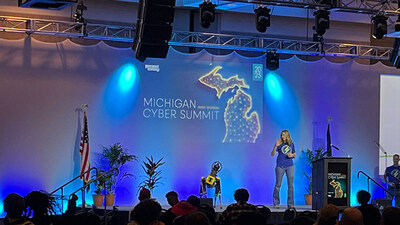Digital fraud in Mexico is escalating at an alarming rate, with a striking 27% increase in the first quarter of 2025 alone, according to identity verification firm Sumsub. A particularly concerning development is the staggering 1,200% rise in the use of synthetic identity documents, a trend that starkly contrasts with the global average increase of 195%. This surge highlights a significant shift towards AI-enabled fraud.
As organizations grapple with this evolving threat landscape, many are turning to AI-driven security solutions to bolster their defenses. However, a recent report from Microsoft, titled “Cybersecurity 2025: Challenges and Strategies in the AI Era for Large Enterprises in Mexico,” underscores that companies are struggling to keep their governance, preparedness, and risk management practices aligned with the rapid advancements in cyber threats.
AI technology is becoming increasingly central to the cybersecurity strategies of Mexico’s largest enterprises. Companies are adapting their frameworks to better combat the sophisticated tactics employed by cybercriminals. The Microsoft report emphasizes that while businesses are making investments in AI security measures, significant governance and risk management gaps remain. This disconnect poses a substantial risk as cyber threats continue to evolve at a pace that outstrips current defensive capabilities.
In response to the heightened risk environment, cybersecurity firms like Fortinet have introduced initiatives aimed at enhancing digital safety. Fortinet recently published a cyber-hygiene guide tailored for the high-consumption El Buen Fin shopping event in Mexico, a period known for significant online transactions. This proactive step aims to mitigate the increased activity of cyberattackers looking to exploit vulnerabilities during peak shopping seasons. The trend of increasing vulnerabilities is not unique to Mexico. In a recent international development, researchers from the University of Vienna and SBA Research revealed a serious privacy flaw in WhatsApp that affects over 3.5 billion accounts worldwide. The vulnerability lies in WhatsApp’s contact discovery mechanism, which inadvertently allows for the enumeration of active accounts. Following responsible disclosure, Meta has taken steps to address the issue. The findings will be presented at the NDSS Symposium 2026.
This incident serves as a stark reminder that even well-established platforms are not immune to persistent architectural vulnerabilities. As both fraud tactics and the cybersecurity landscape evolve, the gap between offensive and defensive capabilities continues to widen, driven largely by advancements in artificial intelligence.
The overarching narrative here is clear: while AI has the potential to enhance cybersecurity measures significantly, it also gives rise to more sophisticated methods of fraud. The challenge for enterprises is to close the substantial governance gaps and ensure that their preparedness and risk management practices are robust enough to keep pace with the evolving cyber threat landscape.
As the global community continues to confront these challenges, organizations must remain vigilant in adapting their strategies and practices. The interplay between AI technology and cybersecurity will undeniably shape the future of digital safety, making it imperative for businesses to prioritize governance and risk management as they invest in AI-driven solutions.AI’s Role in Cybersecurity
Global Vulnerabilities Exposed
 Telstra Advances Network as a Product Strategy with New AI-Driven APIs for Developers
Telstra Advances Network as a Product Strategy with New AI-Driven APIs for Developers Stocks Plunge 2% Amid AI Skepticism and Fed Rate Concerns; Bitcoin DropsStocks Plunge 2% Amid AI Skepticism and Fed Rate Jitters; Bitcoin Sinks Below $87K
Stocks Plunge 2% Amid AI Skepticism and Fed Rate Concerns; Bitcoin DropsStocks Plunge 2% Amid AI Skepticism and Fed Rate Jitters; Bitcoin Sinks Below $87K Baidu’s Price Target Rises to $147 Amid Strong AI Growth and Business Optimism
Baidu’s Price Target Rises to $147 Amid Strong AI Growth and Business Optimism Foxconn Partners with OpenAI to Develop AI Hardware for Data Centers Amid Demand Surge
Foxconn Partners with OpenAI to Develop AI Hardware for Data Centers Amid Demand Surge Meta Partners with Sify to Develop 500 MW AI Data Centre in Visakhapatnam
Meta Partners with Sify to Develop 500 MW AI Data Centre in Visakhapatnam




































































